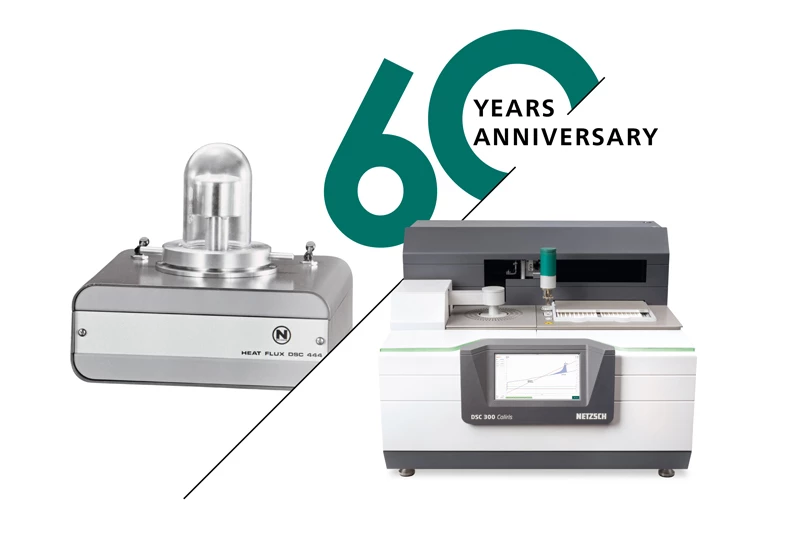
04.05.2022 by Aileen Sammler, Stephan Knappe
60 Years of NETZSCH-Gerätebau: The Development of Differential Scanning Calorimetry
Differential scanning calorimetry (DSC) is most frequently used thermoanalytical method. Stephan Knappe has been employed at NETZSCH-Gerätebau in Selb for more than 31 years. As a “keystone employee”, Stephan Knappe has accompanied the development of Differential Scanning Calorimetry (DSC) for years and will summarize the milestones for us here.
We are continuing to celebrate 60 years of NETZSCH-Gerätebau GmbH throughout 2022. As part of our anniversary year, we’ve been taking a close look at a different area of our company’s specialties each month. After introducing our dilatometers, STAs and coupling instruments, and TGA in the preceding months, next up is the most frequently used thermoanalytical method: differential scanning calorimetry (DSC), which takes center stage in May.
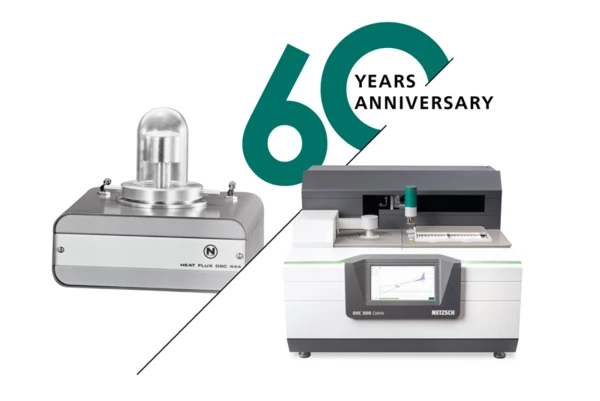
Stephan Knappe has been employed at NETZSCH-Gerätebau in Selb for more than 31 years. His degree in chemical engineering stems from his studies in technical chemistry at the Georg-Simon-Ohm University of Applied Sciences in Nuremberg; afterward, in April 1991, he began work at the NETZSCH Applications Laboratory as our first polymer specialist. Upon its separation from our High-Temperature Applications Laboratory, he became head of our newly founded Polymer Lab and – along with the corresponding sales staff – hosted application seminars with live workshops, initially in Germany, Austria and Switzerland, and later in other European countries as well. He has occupied several positions at NETZSCH over the years: Among others, he has been Product Manager of the 200 instrument series for DSC, TGA and DMA; Head of Sales & Applications Support worldwide; and Sales Manager for Southern Europe. Currently, as Sales Manager for Western Europe, he is responsible for our German market, the NETZSCH branch offices in Western Europe, and our exclusive sales agencies.
As a “NETZSCH keystone employee”, Stephan Knappe has accompanied the development of Differential Scanning Calorimetry (DSC) for years and is will summarize the milestones for us here.
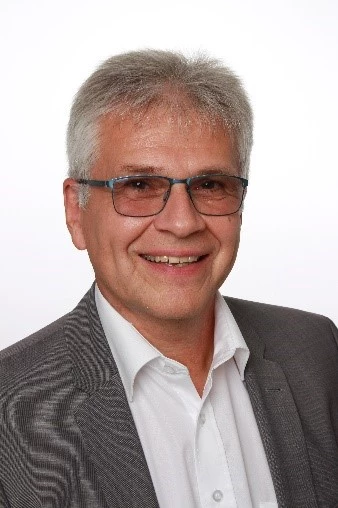
“NETZSCH keystone employee” Stephan Knappe is summarizing the milestones in DSC history
The Most Important DSC Stations in NETZSCH History
Until the end of the 1980s, NETZSCH-Gerätebau GmbH (NGB) focused exclusively on the high-temperature range. Phase transformations and the specific heat of ceramics, glass, metals, minerals and building materials were investigated to 1500°C by means of the DSC 444 differential scanning calorimeter (figure 1), developed in 1981. Approximately 80% of NETZSCH customers were universities and research centers, mainly in the home market of Germany.
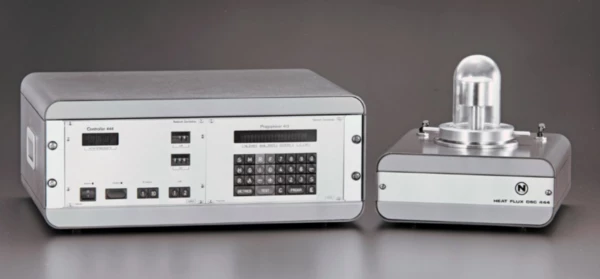
DSC 200 (Figure 2), acquired at the end of the 80s, along with the Mitas software on MS-DOS level, the company slowly but surely moved into the low-temperature range from -170°C to 530°C. This development allowed us to finally address inquiries from customers in certain sectors, particularly plastics development and processing, in order to obtain characteristic material data for such processes as melting, CrystallizationCrystallization is the physical process of hardening during the formation and growth of crystals. During this process, heat of crystallization is released.crystallization and Glass Transition TemperatureThe glass transition is one of the most important properties of amorphous and semi-crystalline materials, e.g., inorganic glasses, amorphous metals, polymers, pharmaceuticals and food ingredients, etc., and describes the temperature region where the mechanical properties of the materials change from hard and brittle to more soft, deformable or rubbery.glass transition. The targeted success began after starting our collaboration with the Plastics Technology Department at the Würzburg University of Applied Sciences, hiring a polymer expert and hosting seminars throughout the German-speaking area.
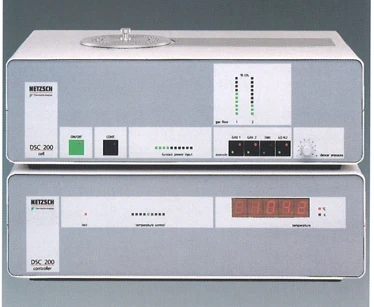
Launch of the 200 Series for the Plastics and Rubber Sector
In 1994, we were able to present the completely newly developed 200 instrument series (figure 3) – with its DSC 200, TG 209 and DMA 242 members – live at trade fairs, conferences and seminars in Europe. All these instruments ran on the then-revolutionary Windows 3.1 software platform, marking an international breakthrough in the polymer field, as evidenced by the high number of visitors to our booth at the K plastics trade fair in Düsseldorf in 1995 and at the VDI-Automobiltagung (automotive conference) in Mannheim the following year.
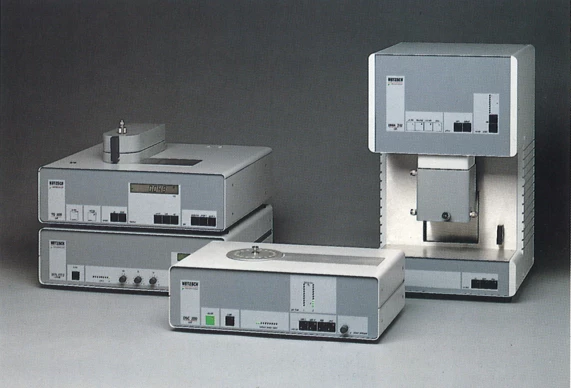
This new DSC 200 was, of course, heavily advertised. Here, you can take a look at the collection of various advertisements for trade shows and trade magazines from the 90s:

The automotive industry represented a relatively significant target group for the new low-temperature instrument series.
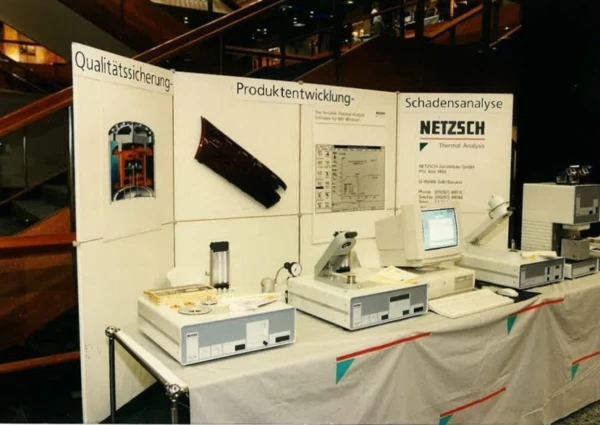
Market requirements were steadily increasing, and parallel to the DSC 200, the DSC 204 Phoenix® (figure 5) was developed to cover the wider temperature range from -180°C to 700°C and allow for higher heating and cooling rates. This instrument was presented at the ACHEMA trade show in Frankfurt in 1997. Well-known customers from the automotive sector, such as BMW, were acquired as references. In collaboration with the German Aerospace Center, “DLR” (Deutsche Luft- und Raumfahrt), the SuperSensor was introduced in 2001; with its sensitivity at 15 times higher, it was capable of detecting the smallest of endo- and ExothermicA sample transition or a reaction is exothermic if heat is generated.exothermal effects. Since 1998, the high-pressure version of the DSC 204 Phoenix®, the DSC 204 Phoenix® HP, has been unmatched for use under a variety of gas atmospheres and at pressures of up to 150 bar. In 2000, NETZSCH was awarded the globally coveted R&D100 Award (figure 6) for this development.
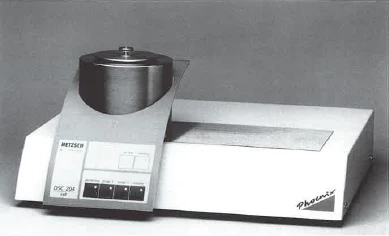
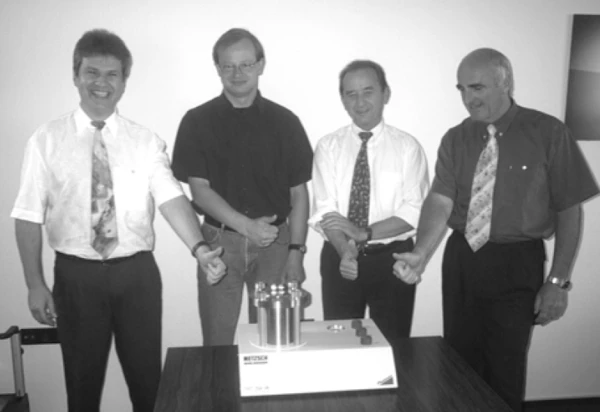
Higher, Faster, Further
In 2000, the successor to the DSC 200 was launched: The DSC 200 PC Phox® (figure 7) was the robust, low-priced entry-level instrument of its time.

In 2003, we achieved great success particularly in China and the US with the DSC 204 F1 Phoenix® (Figure 8), which is still available to this day. At NETZSCH, F1 stands for Formula 1 – i.e., higher, faster, further. This instrument won over customers in the research & development of not only polymers, but also pharmaceuticals, cosmetics and foods. In 2005, we launched its little sister, the DSC 200 F3 Maia (Figure 9). As a workhorse, it was preferred for applications in quality control and assurance. For the Asian market, the DSC 3500 Sirius with its small footprint (figure 10) was built by NETZSCH Japan (NJA). Since 2019, it has been manufactured at NETZSCH in Selb for the world market.

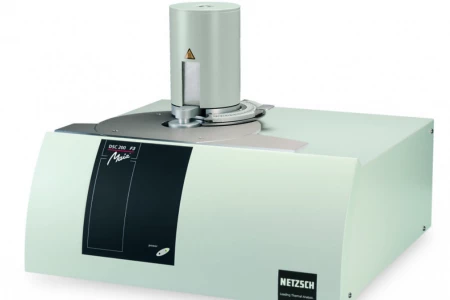
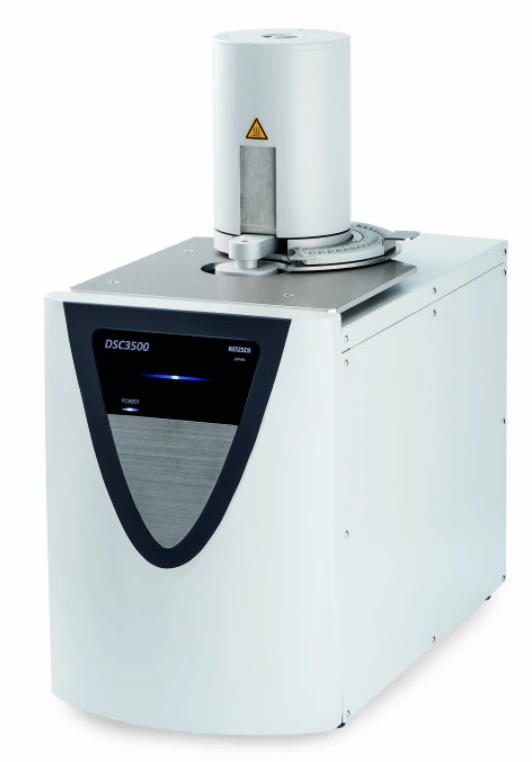
The biggest success on the DSC sector thus far was achieved with the launch of the DSC 214 Polyma (Figure 11) at the K 2013 trade show.
It allowed for heating and cooling rates at levels previously unachievable for heat-flux DSCs. This combination of a furnace, sensor and crucible as a completely newly developed system was patented. The entire concept for this DSC was revolutionary: sample preparation with extensive accessories, pre-defined measurement methods, automatic calibration, and fully automatic evaluation algorithms at the click of a mouse. In addition, the unique Identify software feature allowed for comparison of unknown polymers or blends with a database via similarity features across the entire DSC curve. Today, this Proteus® software is the basis for more comprehensive measurement methods across the entire NETZSCH instrument family.

The DSC 214 is also available as Nevio for the pharmaceutical industry. In conjunction with the associated Proteus® Protect software, it meets the requirements of 21 CFR Part 11 (US Food and Drug Administration regulations for electronic recordings and electronic signatures).
Here’s a short video summarizing the highlights of the DSC 214 Nevio:
All NETZSCH DSC instruments can, of course, be offered with automatic sample changers for up to 204 samples to this day.
A variety of cooling systems with liquid nitrogen, Intracooler or air compressor cover different temperature ranges, tailored to the application range required by the customer. The DSCs can also be expanded with a UV light lamp to become a Photo-DSC, for such applications as the UV Curing (Crosslinking Reactions)Literally translated, the term “crosslinking“ means “cross networking”. In the chemical context, it is used for reactions in which molecules are linked together by introducing covalent bonds and forming three-dimensional networks.curing of reactive resin systems.
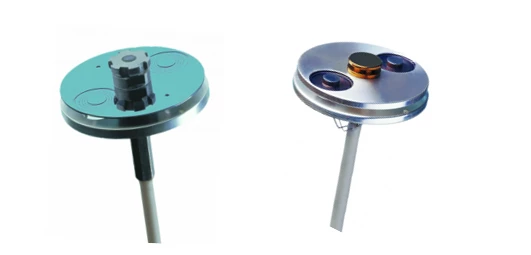
Take a look at our extensive Accessories catalog.
Today, in our comprehensive DSC product range with extensive software, there are more instruments than in any other NETZSCH instrument line for thermal analysis.
In the weeks to come, you will be able to read how DSC provides support in the characterization of pharmaceutical active ingredients as well as in the quality assurance and development of seals. And you can look forward to a presentation about our latest development in thermal analysis!
By the way: Have you registered for NETZSCH FutureDays yet?
This virtual event will take place from May 16 to 19, 2022. The following four topics will be discussed with a view to the future: Pharmaceuticals and Life Science, Batteries and Insulation, Smart Manufacturing and Smart Labs, and Additive Manufacturing.